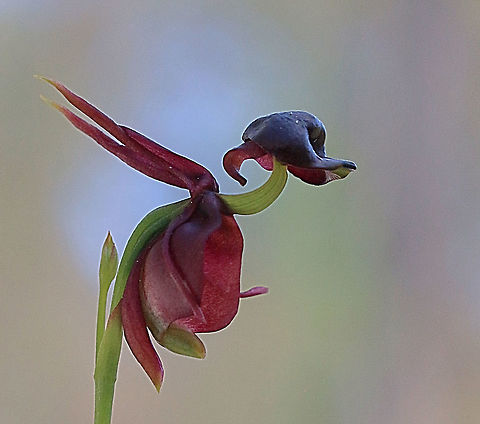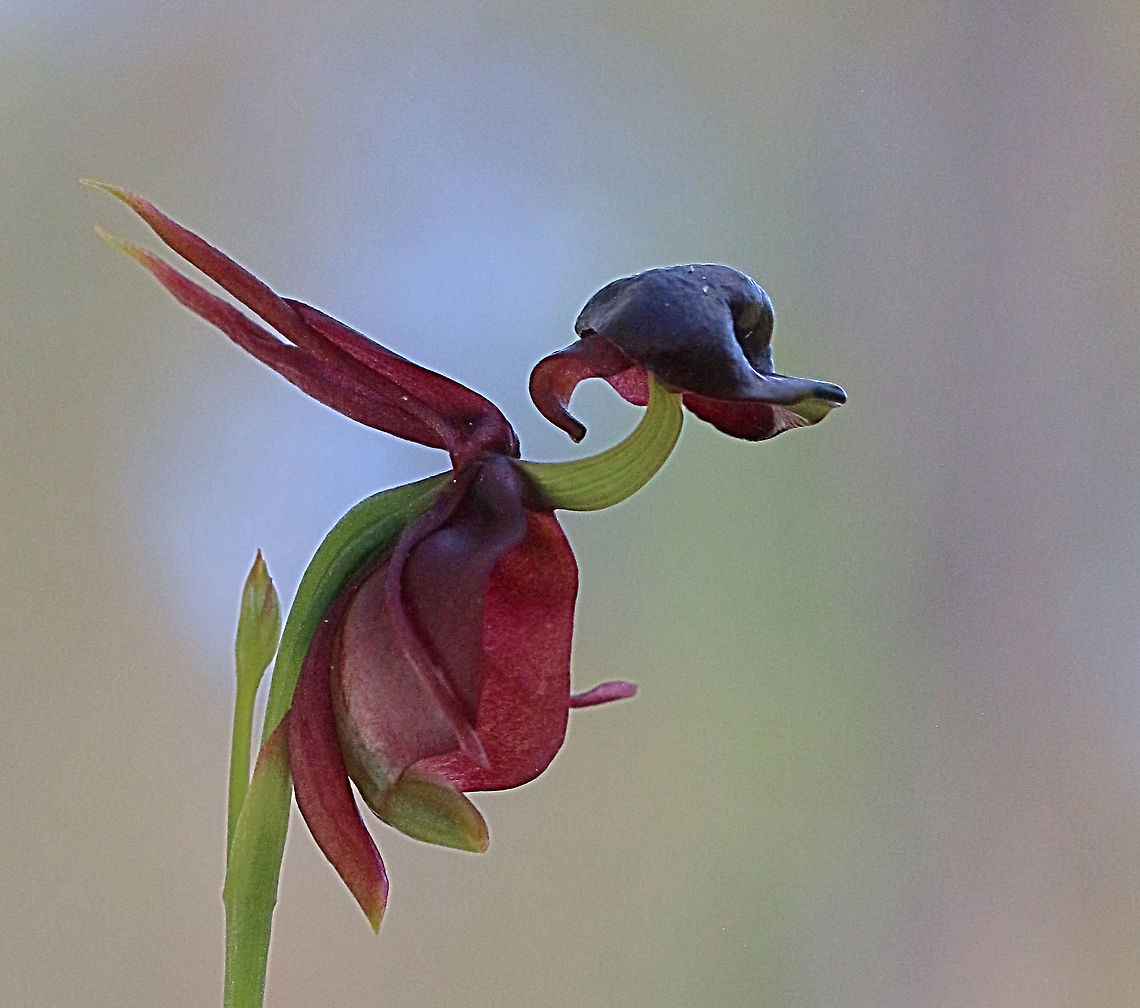
''Caleana major'', the Flying Duck Orchid, is a small orchid found in eastern and southern Australia. This terrestrial plant features a remarkable flower, resembling a duck in flight. The flower is an attractant to insects, such as male sawflies which pollinate the flower in a process known as pseudocopulation. In 1986 this orchid was featured on an Australian postage stamp.
Similar species: Agaves, Aloes, Onions
By Ernst
All rights reserved
Uploaded Apr 19, 2020. Captured Oct 12, 2017 19:16 in Owen Dawson Track, Langwarrin VIC 3910, Australia.


comments (5)
Posted 5 years ago
Quack? Behold the flying duck orchid (Caleana major)! Found in eastern and southern Australia, this terrestrial orchid has a remarkable flower that looks like a flying duck! It can grow up to 50 cm (20 in) tall, and when it blooms, the petals come together to create a duck-like doppelganger. This unique orchid has a secret to its success and it involves sex. Weird, deceptive sex, to be exact.
You see, the orchids are sneaky. Their game is to dupe pollinators. Here’s how it works…The orchid produces sex-pheromones that attract male insects, such as sawflies, that are in search of a female mate. As the insect gets close to the orchid, he is further fooled by the flower’s labellum, which sort of resembles the female of his species. This is called Pouyannian mimicry and is a tactic sometimes used by plants to increase the chances of pollination.
Amazing, right? Well, it gets better. The orchid’s mimicry of a female sawfly is so convincing that the male actually attempts to copulate with the flower in a process called pseudocopulation. Unfortunately for the deluded male, the orchid is giving all tricks and no treats. As the male insect lands on the labellum, his vigorous, thrusting, copulatory exertions end up jostling the orchid’s pollinia (sacs of pollen). The pollinia come loose and get stuck to his back. He continues to “copulate” with the flower to the point of ejaculation. Eventually, he flies away, visits other orchids, unwittingly pollinates them, and thus helps the orchids reproduce.
So, do the sawflies waste all their sperm on the orchids? Do they have any sperm left if they encounter a real female of their species? Here’s the deal—female sawflies that only receive a small amount of sperm from a mate tend to produce more male offspring and fewer females. More males equal more pollinators for the orchid! Plus, an overabundance of males means that they will be more desperate when seeking a female mate because there will be more competition! Desperate, sex-starved male sawflies are less discriminating and perhaps more willing to copulate with an orchid that kind of, sort of, maybe looks like a female, especially if he squints a bit. It’s good enough for him and works out well for the orchid.
Flying duck orchids look like ducks, act like female sawflies, and are all-around as remarkably brazen as they are beautiful. {Spotted in Victoria, Australia by JungleDragon user, Ernst} #JungleDragon #Flyingduckorchid #Pseudocopulation #Caleanamajor
https://www.facebook.com/jungledragonwildlife/ Posted 5 years ago
Check out these beauties! Today is the 3rd day of Wildflower Week on JungleDragon! #JungleDragon #Angiosperms #Floweringplants #Wildflowers
Want to see more wild, weird, and fabulous flowering plants? Click here:
https://www.jungledragon.com/wildlife/photos/plantae/angiosperms
https://www.facebook.com/jungledragonwildlife Posted 4 years ago